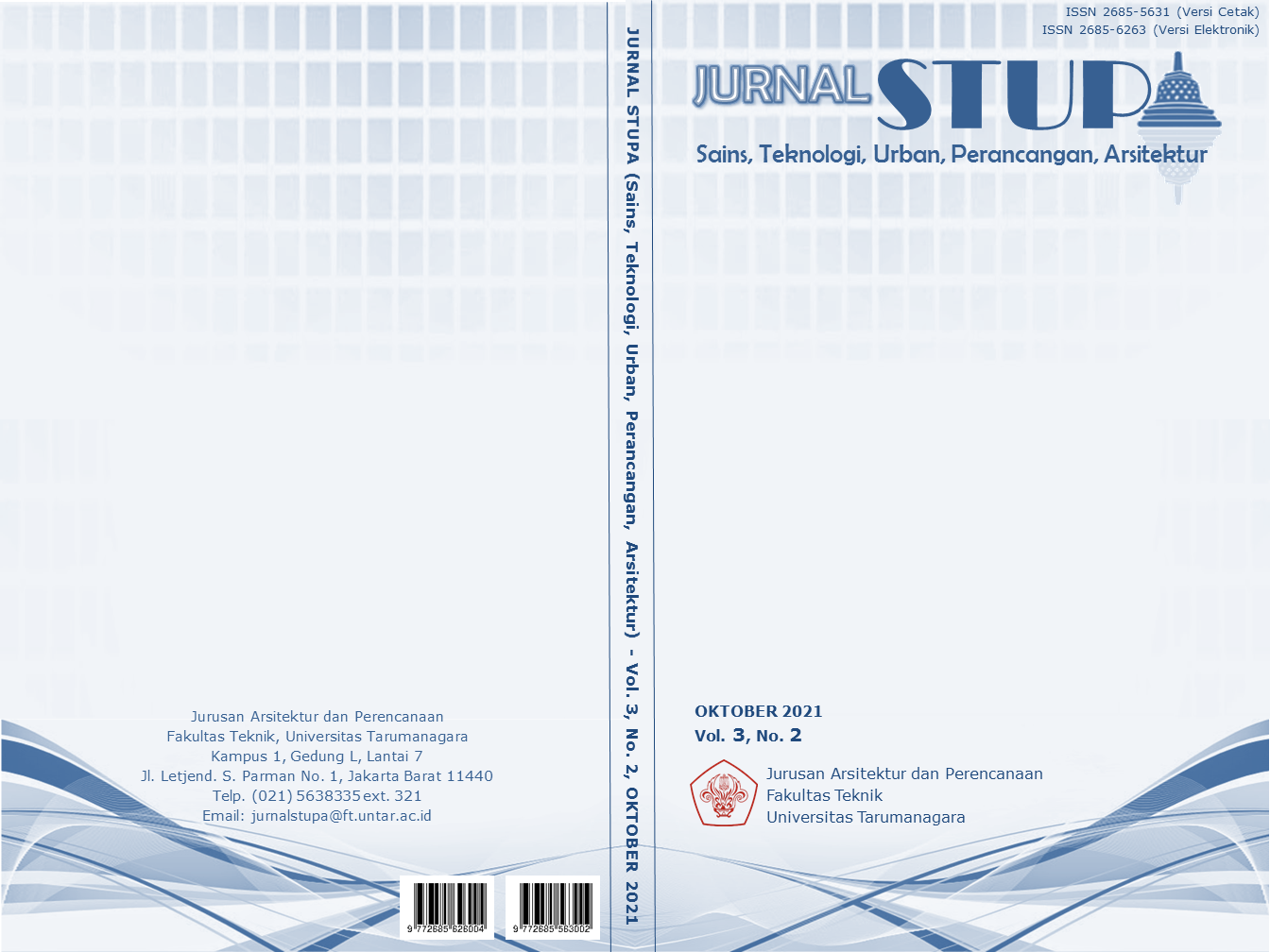RE-FEASIBILITY STUDY PENGEMBANGAN APARTEMEN CISAUK POINT DENGAN METODE SENSITIVITAS UNTUK OPTIMALISASI INVESTASI
Main Article Content
Abstract
Cisauk Point Apartment is part and one of LRT City, which applies the TOD concept. Cisauk Point Apartment is located right next to Cisauk Station, where Cisauk Station itself serves KRL Commuter Line and integrates with Intermoda BSD City. With all the potential of the Cisauk Point Apartment, it is interesting for the author to conduct a re-feasibility study of this apartment’s development. The objectives of this study include knowing the return on investment from the Cisauk Point Apartment’s development after being hampered by the COVID-19 pandemic; and knowing the variables that affect the sensitivity of return on investment from the Cisauk Point Apartments development. Re-feasibility studies were conducted for projects that had used higher than expected costs or time resources, leading to concerns over the validity of the original feasibility studies. The purpose of the re-feasibility study is to prevent budget waste and to improve the efficiency of financial management by making transparent and fair decisions through objective and neutral investigations of the validity of property development projects. Sensitivity analysis is a technique in which different values of certain key variables are tested to see how sensitive the investment returns are to possible changes in assumptions. Investment optimization is an action or process to make the investment of a project produce the best and most profitable returns, and the investment can also be more effective and efficient. The research method uses a qualitative approach with discounted cash flow methods and sensitivity analysis. The study found that the investment in Cisauk Point development was still feasible despite the COVID-19 pandemic, and the most influential variable on investment feasibility was the increase in selling prices.
Keywords: Cisauk Point; Investment; Sensitivity
Abstrak
Apartemen Cisauk Point merupakan bagian dan salah satu kawasan dari LRT City, yang menerapkan konsep TOD. Apartemen Cisauk Point berlokasi tepat di sisi Stasiun Cisauk, dimana Stasiun Cisauk sendiri melayani KRL Commuter Line dan terintegrasi dengan Intermoda BSD City. Dengan segala potensi yang dimiliki lahan pengembangan Cisauk Point, menarik bagi penulis untuk melakukan re-feasibility study atau studi kelayakan ulang terhadap pengembangan apartemen ini. Tujuan penelitian ini antara lain, yaitu mengetahui pengembalian investasi dari pengembangan Apartemen Cisauk Point setelah terhambat akibat pandemi COVID-19; dan mengetahui variabel-variabel yang mempengaruhi sensitivitas pengembalian investasi dari pengembangan Apartemen Cisauk Point. Re-feasibility study dilakukan untuk proyek-proyek yang telah menggunakan biaya atau sumber daya waktu yang lebih tinggi dari yang diharapkan, yang mengarah ke kekhawatiran atas validitas studi kelayakan asli. Tujuan re-feasibility study adalah untuk mencegah pemborosan anggaran dan untuk meningkatkan efisiensi pengelolaan keuangan dengan pengambilan keputusan yang transparan dan adil melalui investigasi yang objektif dan netral terhadap validitas proyek pengembangan properti. Analisis sensitivitas merupakan teknik dimana nilai yang berbeda dari variabel kunci tertentu adalah diuji untuk melihat seberapa sensitif hasil investasi terhadap kemungkinan perubahan asumsi. Optimalisasi investasi merupakan suatu tindakan atau proses untuk membuat investasi dari suatu proyek dapat menghasilkan pengembalian yang terbaik dan paling menguntungkan, serta investasi tersebut juga dapat menjadi lebih efektif dan efisien. Metode penelitian, menggunakan pendekatan kualitatif dengan metode discounted cash flow dan analisis sensitivitas. Penelitian menemukan bahwa investasi pengembangan Cisauk Point masih layak meski adanya Pandemi COVID-19, dan variabel yang paling berpengaruh kelayakan investasi adalah kenaikan harga jual.
Article Details
References
Aurora, R. P. (2011). Analisa Teknis dan Finansial Proyek Pembangunan Apartemen Ciputra World Surabaya. Jurnal Insitut Teknologi Sepuluh Nopember Surabaya.
Balkhair, A. A. (2020). COVID-19 Pandemic: A New Chapter in History of Infectious Diseases. Oman Medical Journal.
Blair, V. B. (1988). How to Conduct & Analyze Real Estate Market and Feasibility Studies. New York: Van Nostrand Reinhold.
Cummings, J. (2008). Real Estate Finance & Investment Manual. New Jersey: John Wiley & Sons, Inc.
Fisher, W. B. (2011). Real Estate Finance and Investment. New York: McGraw-Hill Companies.
Graaskamp, J. A. (1972). A Rational Approach to Feasibility Analysis. Chicago: Society of Real Estate Appraisers.
Hestu Prasetya, F. S. (2017). Analisis Teknis dan Finansial Proyek Pembangunan Apartemen U-Residence 3 Karawaci, Tangerang Selatan. e-Jurnal Matriks Teknik Sipil, 1-8.
Mathofani, A. (2014). Analisa Kelayakan Finansial Proyek Pembangunan Apartemen The Peak Pekanbaru. Jurnal FTEKNIK Volume 2 No.1.
Mike E. Miles, B. G. (2015). Real Estate Development: Principles and Process. Washington DC: Urban Land Institute.
Park, C. S. (2013). Fundamentals of Engineering Economics . Harlow: Pearson Education Limited.
Paul, S. (1967). Apartments: Their Design and Development. Michigan: Reinhold Publishing Company.
Singer, G. T. (2005). The Real Estate Invesment Handbook. New Jersey: John Wiley & Sons, Inc.



